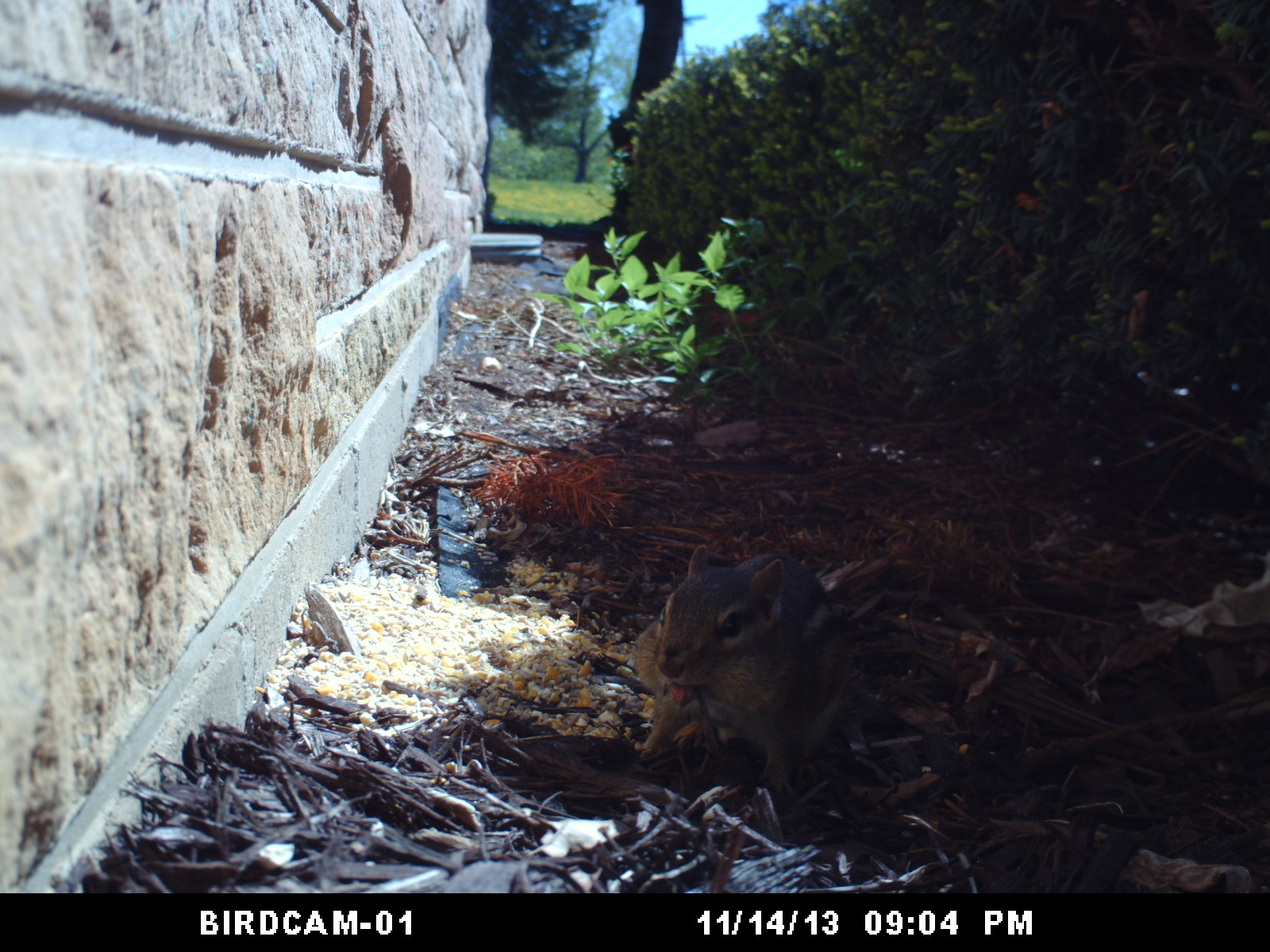I think I’m capturing molting of an eastern chipmunk in some of these photos: in late spring, male chipmunks molt into their summer coat. Apparently, the molt sequence is the same as that of red squirrel, so I tracked down the old paper describing red squirrel molt to compare notes with the chipmunk photos (Yerger 1955).
“The first changes occur either around the nose and under the chin, or on the front feet; or the molt may begin at these two places at about the same time.” – Bernard Nelson, Spring Molt of the Northern Red Squirrel in Minnesota

“The molt begins later on the hind feet, but usually before much change has occurred on the back. On the front feet the molt commonly proceeds faster on the inner side of the feet, many specimens showing the ochraceous summer coat to the heel on the inside while on the outside of the feet the winter coat persists almost to the end of the toes. A similar unevenness in the appearance of the summer coat is seen on the hind feet, but either side of the foot may change color first. In the early stages, the molt frequently begins on a single row of phalanges of the hind foot first, usually the second row from the claws, while the distal row remains unchanged.” – B. Nelson (1945)
As you can imagine, it’s tough to get photos of the hind feet, but I’ll keep looking!
“The sides of the head ordinarily assume the summer pelage before the top of the head. The molt is also complete along the flanks and on the underparts before the back has changed pelage completely. The molt on the back is often ragged and irregular, with the rump retaining the winter coat the longest.” – Bernard Nelson (1945)
Literature Cited
Nelson, B. 1945. The Spring Molt of the Northern Red Squirrel in Minnesota.
Yerger, R. 1955. Life History Notes on the Eastern Chipmunk, Tamias striatus lysteri (Richardson), in Central New York.